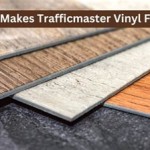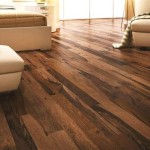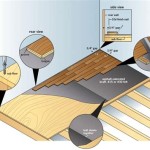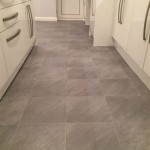Best Adhesive for Vinyl Flooring To Wood: A Comprehensive Guide
Vinyl flooring has become a popular choice for homeowners due to its durability, affordability, and ease of maintenance. When installing vinyl flooring over existing wood subfloors, selecting the right adhesive is crucial for a long-lasting and secure installation. This guide will explore different adhesive options available for vinyl flooring to wood, highlighting their features, benefits, and considerations for a successful installation.
Types of Adhesives for Vinyl Flooring to Wood
When it comes to adhering vinyl flooring to wood, several adhesive types are available, each offering unique advantages. The most common options include:
- Pressure-Sensitive Adhesive (PSA): PSA adhesives, typically applied to the back of the vinyl planks or tiles, offer a quick and easy installation method. They rely on pressure to activate the bonding process, making them ideal for DIY projects. However, PSA adhesives might not be as strong or durable as other options.
- Solvent-Based Adhesives: These adhesives, often referred to as "contact cements," require a two-part application process. One part is applied to the wood subfloor, and the other is applied to the back of the flooring. The solvent evaporates, creating a strong bond. Solvent-based adhesives are known for their high adhesion strength and durability but require proper ventilation during application.
- Water-Based Adhesives: Water-based adhesives are a popular choice for their low VOC emissions and easy clean-up. They are typically applied with a trowel and allow for slight adjustments during installation. While not as strong as solvent-based adhesives, water-based adhesives offer excellent adhesion for most vinyl flooring applications.
- Moisture-Curing Adhesives: Designed for high-moisture areas, moisture-curing adhesives react with moisture in the air to form a strong bond. They are suitable for installations where moisture is a concern, such as bathrooms or kitchens. However, they require longer drying times compared to other options.
Factors to Consider When Choosing Vinyl Flooring Adhesive
Selecting the best adhesive for vinyl flooring to wood depends on several factors, including:
- Type of Vinyl Flooring: Different vinyl flooring types, such as luxury vinyl tile (LVT) or vinyl plank flooring, may require specific adhesives for optimal bonding. For example, LVT typically benefits from stronger adhesives like solvent-based or moisture-curing options.
- Subfloor Condition: The condition of the wood subfloor significantly impacts adhesive selection. Uneven, warped, or damaged subfloors require a more flexible adhesive to accommodate movement. In such cases, a moisture-curing adhesive that provides better shock absorption might be a suitable option.
- Project Scope: The size and complexity of the project influence the choice of adhesive. For large areas, a water-based adhesive could be more manageable, while smaller installations might benefit from the convenience of a PSA adhesive.
- Environmental Considerations: VOC emissions and drying times are important factors to consider, especially for indoor applications where ventilation is limited. Water-based adhesives are known for their low VOC emissions, making them a preferred choice for environmentally conscious homeowners.
Tips for Applying Vinyl Flooring Adhesive
Once the right adhesive is selected, proper application is crucial for a successful installation. Here are some tips to consider:
- Prepare the Subfloor: Ensure the wood subfloor is clean, dry, and free from debris. Any imperfections, such as cracks or gaps, should be repaired before applying adhesive.
- Follow Manufacturer's Instructions: Carefully read and follow the manufacturer's instructions for the specific adhesive chosen. This includes information about application techniques, drying times, and any necessary precautions.
- Apply Adhesive Evenly: Use a trowel or roller to spread the adhesive evenly across the subfloor. Avoid applying too much adhesive, as it can cause bubbles or uneven flooring.
- Allow Adequate Drying Time: Ensure the adhesive is fully dried before installing the vinyl flooring. This will prevent the flooring from shifting or becoming dislodged. Refer to the manufacturer's instructions for recommended drying times.
By carefully considering the adhesive type, project requirements, and application techniques, homeowners can ensure a secure and long-lasting vinyl flooring installation over wood subfloors. Always refer to the manufacturer's recommendations for specific adhesive types and installation procedures for optimal results.

What S The Best Glue To Use For Vinyl Flooring

Best Glue For Vinyl A Guide To Selecting The Adhesive

L And Stick Vinyl Plank Flooring 101 Floorings

L And Stick Vinyl Plank Flooring 101 Floorings

Self Adhesive Vinyl Floor Imitation Wood Best Ing Non Slip Lvt Flooring Sheet China Made In Com

Suitable Subfloors For Self Adhesive Vinyl Floor Tiles Planks Best Surface To Install L Stick

Roberts 3 Oz Gray Wood Laminate And Vinyl Putty Pc7728 The Home Depot

Luxury Vinyl Flooring Vs Glue Direct Wood

Best Printed Colorful Wood Texture Adhesive 2mm Pvc Laminate Flooring Wpc Spc Vinyl Floor Tile China Plastic Tiles Carpet Look Made In Com

Art3d Light Grey 6x36 Water Resistant L And Stick Vinyl Floor Tile Self Adhesive Flooring 54sq Ft Case A43hd002 The Home Depot








